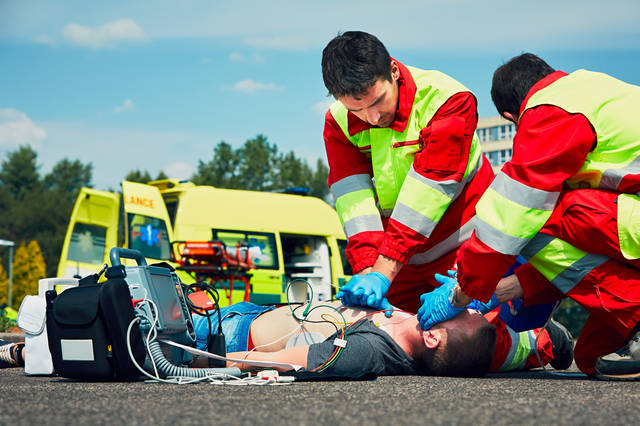HAMLET — Richmond Community College began offering classes this week that will allow EMTs and paramedics to bring their training up to current state guidelines, but Scotland County’s medics are ahead of the curve.
EMS crews who received their initial credentials prior to Jan. 1, 2014, and those who were taught under the National Standard Curriculum for Medical Responders, EMT – Basic, EMT – Intermediate, and EMT – Paramedic will be required to take the classes.
The new training mandates do not affect Scotland County Emergency Medical Services’ 15 paramedics, according to EMS Director Roylin Hammond. The training also does not apply to Emergency Medical Dispatch personnel.
“That requirement came out a year and a half ago, and most of our medics took that bridge class through Robeson Community College. They are on top of their game,” Hammond said. “Robert Sampson took care of that in Feb. 2017.”
Sampson is EMS’ training and logistics officer and is responsible for organizing training for the county’s EMS crews.
The new requirements will not affect the continuity of care that residents currently see from Scotland County EMS, according to Hammond.
“It won’t enhance anything; it’s just making us aware of changes in the rules. We won’t deliver care in a different manner; EMTs might not have been able to do certain procedures before but they can now,” Hammond said.
The new rules allow first responders who had taken past forms of training to come current to national standards for EMTs and paramedics recently adopted by North Carolina, according to Sampson.
In the past there were medical procedures that paramedics and EMT were not allowed to do such as remove or care for an existing Foley (bladder) catheters, feeding tubes or a peripherally inserted catheter or PICC line — used to deliver long term intravenous medication.
“Before if you had someone who was having issues with a Foley catheter we couldn’t touch it if we thought that was what was causing problems,” Sampson said. “Medics will now be able to address these issues for patients they pick up while en route to the hospital.”
Paramedics and emergency medical technicians will need need to take these classes before Dec. 31 in order to retain their credentials , according Hammond.
“If they have their credentials and don’t do these bridge classes, they will have to go through all of their training again. That is a major commitment to have to go through, if you’ve already achieved this certification,” Hammond said.
North Carolina requires that Emergency Medical Technicians take 169 to 200 class hours and Paramedics take 460 to 600 class hours in addition to clinical, or hands-on training, on the road and in emergency rooms.
Hammond does not know how many crew members of the all volunteer Scotland County Rescue Squad have taken the bridge training. Squad Commander Kevin Strickland could not be reached for input.
Richmond will offer all of the classes online, and classes will be offered twice before the completion deadline.
Class dates
EMT B to EMT Transition class begins on June 12 and will run to June 26 and again from Sept. 18 to Oct. 2.
EMT I to AEMT will be offered from July 10 to July 30 and and again from Oct. 9 to Oct. 30.
EMT P to Paramedic Transition will run from Aug. 7 to Sept. 11 and from Nov. 6 to Dec. 11.
Pre-registration is required for these courses. Fees are waived for qualified individuals.

